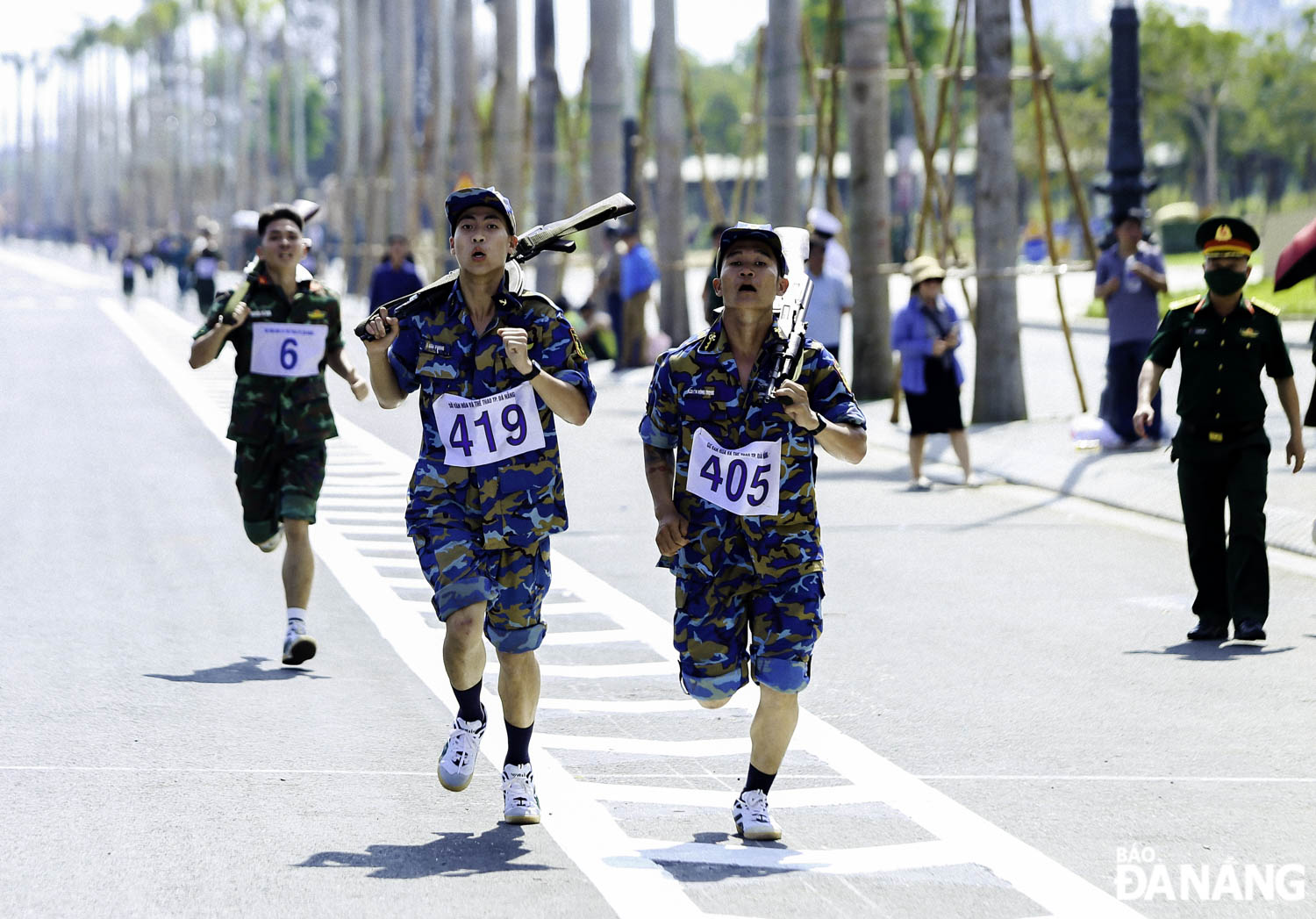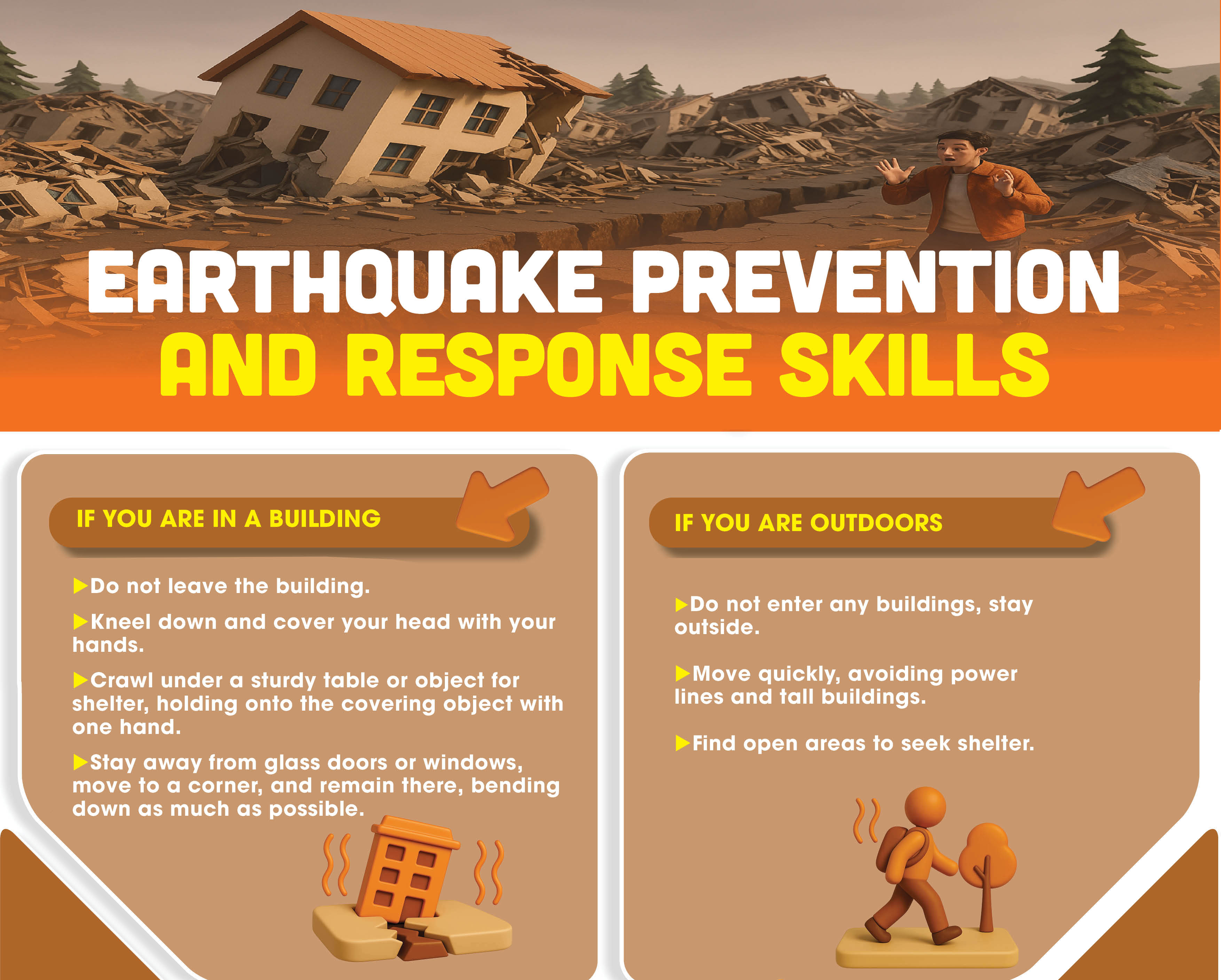Flexible adaptation to natural disasters
As a coastal city, Da Nang experiences nearly ten storms annually. Consequently, both the city’s government and its residents treat disaster preparedness as an urgent, long-term mission.
 |
| Mr. Nguyen Dinh Vinh (right), Permanent Deputy Secretary of the Da Nang Party Committee, inspecting disaster preparedness efforts in Hoa Vang District in 2024. Photo: T.Y |
Enhancing disaster preparedness
The memories of two devastating typhoons, Chanchu and Xangsane in 2006, remain vivid for Da Nang's residents. Although 18 years have passed, the severe impact of these storms serves as a lesson that drives the city to constantly enhance its disaster preparedness to protect lives and property.
In flood-prone areas such as Lien Chieu, Hai Chau, Cam Le, and Hoa Vang districts, the city has prioritised upgrading drainage systems, retention lakes, and riverbank dikes. The drainage system has also been improved to reduce flooding during heavy rains. Additionally, raising public awareness has been a priority. Residents are taught to prepare emergency supplies, protect their homes, and follow evacuation procedures during storm warnings.
Many families have developed the habit of inspecting and repairing their homes ahead of the rainy season. Mr. Tran Van Thanh, residing in Man Thai Ward, Son Tra District, shared that his family always waterproofs and reinforces their home before the rainy season, turning it into a routine practice rather than a response to storms. Early warning systems via mobile phones, apps, and online platforms keep everyone updated with the latest weather developments. Volunteer organisations and local emergency teams are ready to assist with evacuations and rescue operations, providing peace of mind to families.
Much of Hoa Vang District lies downstream of the Vu Gia and Thu Bon rivers. In recent years, the construction of major roads, such as the Da Nang-Quang Ngai expressway, has altered the flow of these rivers.
During a 2024 inspection of disaster preparedness in Hoa Vang District, Mr. Nguyen Dinh Vinh, Permanent Deputy Secretary of the Da Nang’s Party Committee, urged the district to prepare for worst-case scenarios such as blocked roads, landslides, and prolonged flooding. In response, Hoa Vang District has installed cameras in landslide-prone areas in Hoa Bac Commune and formed rapid response teams ready to tackle emergencies. Additionally, social organisations, youth groups, and volunteers have been mobilised.
At the start of the rainy season, like many other localities, Hoa Vang proactively prepared equipment, supplies, and essentials for disaster response.
Mr. To Van Hung, Secretary of the district’s Party Committee, confirmed that his locality has developed a detailed plan focusing on adaptability and coordinated efforts with related units. All 11 communes are required to follow the "four on-the-spot" approach, which are on-the-spot command, on-the-spot forces, on-the-spot resources, and on-the-spot logistics.
Ensuring safety during rainy season
Da Nang is concentrating on creating a model that can flexibly adapt to natural disasters. For this year's rainy season, the city has prepared seven adaptive scenarios to address different weather conditions. City leaders have consistently emphasised that, in addition to technical and infrastructural solutions, community proactivity and solidarity are crucial factors in ensuring safety during storms.
In recent years, several localities have actively supported residents in affected areas. For instance, Lien Chieu District has 75 locations ready to accommodate evacuated residents in an emergency.
Mr. Hoang Thanh Hoa, Chairman of the district’s People's Committee, confirmed that the district has prepared to evacuate 21,000 residents (10% of the district’s population) in case of storm at levels 12 and 13. The evacuation plan focuses on maintaining security, order, and food supplies in the shelters. Local authorities, police, military, and civil defence forces will assist residents during evacuation. Rescue teams are on standby, ready to respond to emergencies.
According to Mr. Bui Trung Khanh, Chairman of the People's Committee of Hoa Khanh Nam Ward, the drainage systems in the area are inadequate, causing frequent deep flooding in many alleys and streets. Therefore, the first priority is evacuating residents to safety. Local teams help residents secure their homes and move valuable assets to reduce damage. Each year, hundreds of households with solid homes are ready to accommodate evacuees. In more extreme weather, schools, local government offices, and healthcare centres are repurposed to shelter residents.
From improving infrastructure and raising public awareness to implementing flexible response scenarios, Da Nang is steadily reinforcing its ability to adapt and ensure public safety during the rainy season. Furthermore, the collaboration of various companies and units managing drainage, urban greenery, roads, construction, and agriculture has contributed to building a robust urban defence network. The completion of a 13,000-metre embankment along vulnerable stretches of the Yen, Tuy Loan, and Vinh Dien rivers will significantly enhance the city’s protection against erosion and reduce flooding during the rainy season.
Reporting by TIEU YEN - Translating by TRUC VY, VÕ TÙNG








